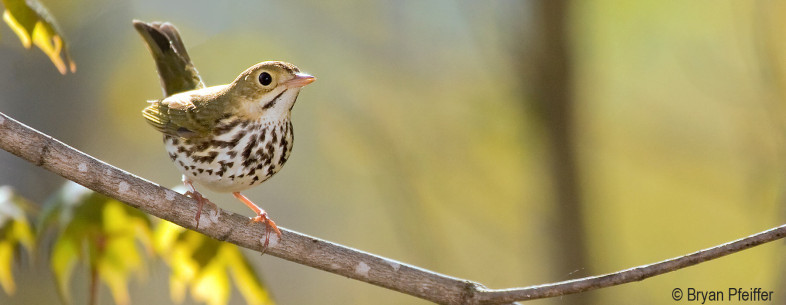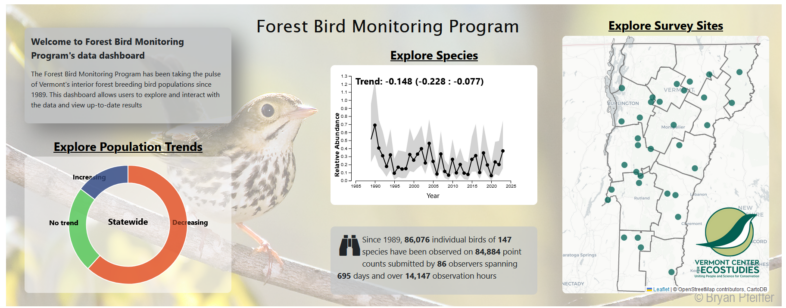
For over 30 years, VCE has coordinated the Vermont Forest Bird Monitoring Program (FBMP) to track the long-term population trends of interior forest birds. The backbone of this project is the dedicated corps of volunteer birders who visit their adopted sites twice a year to conduct 10-minute point count surveys at each of the five designated survey stations along transect routes. Without their commitment and willpower to roll out of bed well before dawn, to be at their first point around 5:00 a.m., the program could not succeed.
Initiated in 1989, the FBMP is now one of the continent’s longest-running studies of forest bird population trends. While numerous studies have documented declines of songbirds inhabiting fragmented landscapes, few monitor birds in protected undisturbed forests in the Northeast. With troubling losses of forest habitats in Latin America and the Caribbean, where many of these birds spend the winter, it is critical to understand how these changes affect—over the long term—diversity and abundance on breeding grounds.
The data these hardy birders collect are invaluable in tracking the status of forest songbirds within large, contiguous, unmanaged forest blocks. These areas are unique because they have not been directly impacted by the effects of recent logging, roads, development, habitat edges, and other variables.
Now, the FBMP has a Data Dashboard where anyone can explore and interact with FBMP data and view up-to-date results. The dashboard not only allows FBMP participants and interested users easy access to up-to-date results but allows us to keep closer tabs on species of concern, such as aerial insectivores, of which five out of seven species in the FBMP data set are declining, reflecting an alarming trend observed continent-wide.
Navigating the Dashboard
The dashboard has three main information categories—Population Trend Summary, Individual Species, and Study Site.
The page focusing on individual species allows users to select from a dropdown menu and view long-term population trends and maps displaying trends and relative abundance at each of our 33 study sites. Similarly, the site summary page provides a dropdown menu of study sites that locates the selected site on a map, displays a graph of the relative abundance of each species detected over time at that site, along with a summary graphic that displays the number of species with increasing, decreasing or showing no population trend. These results will be updated annually as each summer’s survey numbers are entered into the FBMP database. So, check back regularly for up-to-date information on the status of Vermont’s forest interior songbirds.

